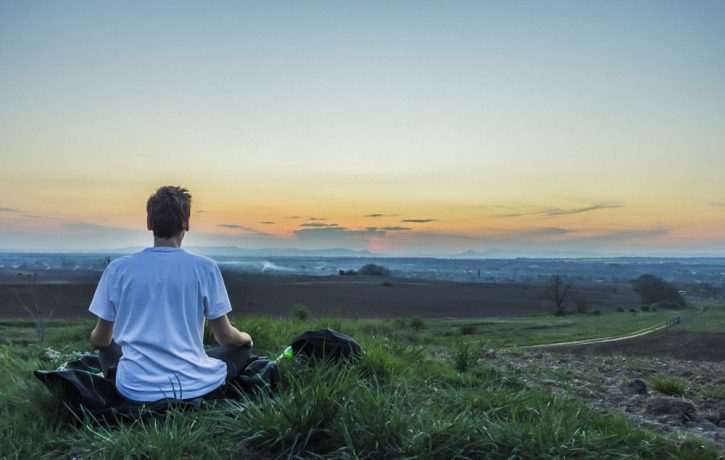in Meditation
Meditation: The Doorways In

There are 2 common methods used in meditation, the purpose of which is to find our true nature, who we are. The two methods are “the looking method” and “the resting method”. In Christian mystical traditions, Via Positiva and Via Negativa (respectively). The looking method suggests ‘Seek and you will find’. The resting method suggests ‘give up seeking and you will find’. Most different styles of meditation include aspects of both. Both methods agree that the obstacle to awakening is ego-identification.
VIA Negativa, The Resting Method
Although one might assume that this method, with the use of the name, that it is negative. It is actually about negating all the many things that obscure the living truth of our being. It is a spiritual practice of deconstructing, dissolving and letting go of what is not our true nature. The search for who you are begins with letting go of everything and seeing who or what is left: learning how to rest until what binds and blinds us finally relaxes. The most common form of this is sitting in meditation.
The four foundations of mindfulness are suffering, fear, attachment and hatred. The goal of which is to see each of these mental processes that combine to create a feeling of a separate self.
Some might consider that all activity, including meditation as an activity. Believing that there is nothing to do, you are already awake, stop all effort and be still.
In this method you sit and withdraw from all external and internal tasks, including doing, monitoring, analysing, judging and controlling. Some methods direct us to let thoughts pass as if they are clouds that obscure our ‘view’.
Zen Buddhism uses a method of Negativa approach: the Koan practise of just sitting, where students may consider the sound of a one hand clap. Pondering the answer, so that eventually the conceptual mind eventually gives up and the person’s true nature is revealed, sometimes spontaneously.
You may have heard of the Zen saying ‘Muddy water – let stand – becomes clear’
Adyashanti says of the resting method:
‘In true meditation, all objects (thoughts, feelings, emotions, memories) are left to their natural functioning. This means that no effort should be made to focus on, manipulate, control, or suppress an object of awareness. In true meditation, the emphasis is on being awareness; not on being aware of objects, but on resting as primordial awareness itself. Primordial awareness is the source of which all objects arise and subside.
As you gently relax into awareness, into listening, the mind’s compulsive contraction around objects will fade. The silence of being will come more clearly into consciousness as a welcoming to rest and abide. An attitude of open receptivity, free of any goal or anticipation, will facilitate the presence of silence and stillness to be revealed as your natural condition.’
Via Positiva, The Looking Method
These methods are about directly seeing through our current, mistaken identity to find the foundation of freedom that’s already here. To intentionally and directly, turn towards awareness, to find the source of mind and ground of our being. We discover that the awareness is already awake within us. It is available to us without the need to develop it.
Saint Francis Assisi said ‘What we are looking for is what is looking.’
The teacher points where and how to look for your own true nature. Once this is done, the teachers work is done. The teacher cannot do the searching for you: you have to do this for yourself.
A Tibetan Master once said:
- Directly recognise your own true nature
- Decide for yourself that this is true
- Proceed with confidence
Once you have recognised your true nature, then it is up to you to remain, and learn to return once you return to your ego-identified state. Become familiar with your own true nature, awareness.
Different methods include an inquiry practice of ‘Who am I?’ or ‘Taking the backward step’
This method is about seeking spirit/ reality/awareness/ true nature as simple and as direct as possible. Awareness is already awake!
Saint Francis Assisi: what we are looking for is what is looking.
- Deepen Embodiment: Somatic Breathing with the Realization Process - 20th June 2025
- How Massage Transforms Muscle and Physical Health - 16th May 2025
- What is Traditional Chinese Medicine (TCM)? - 29th April 2025
